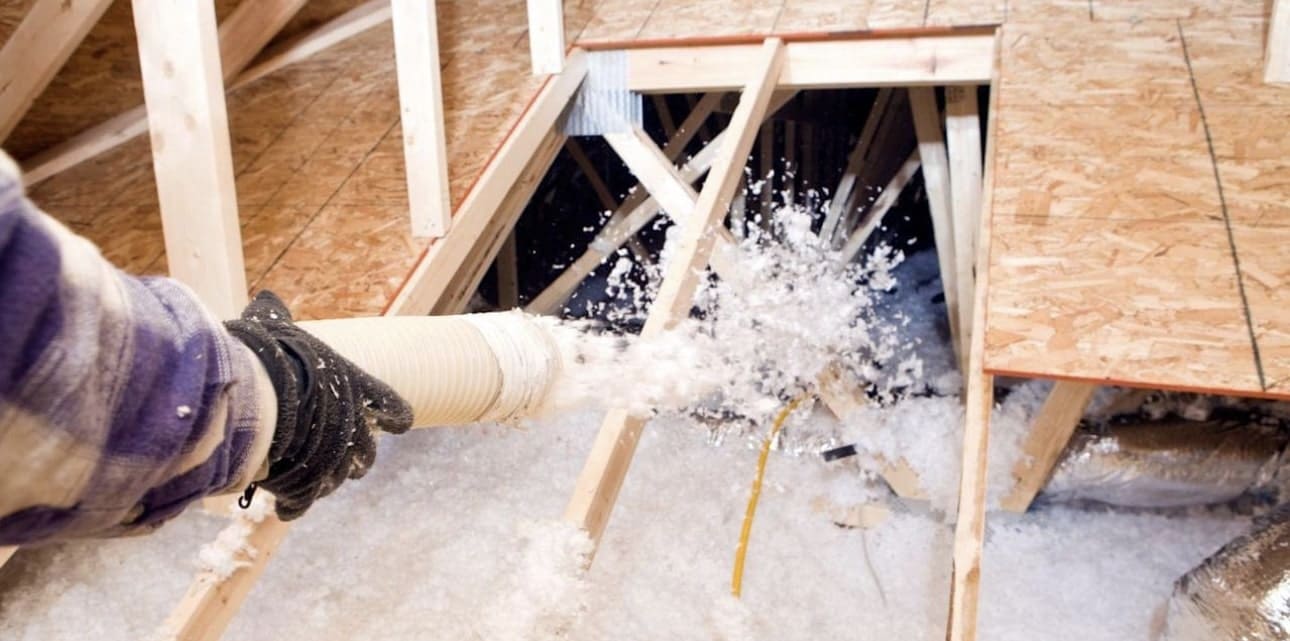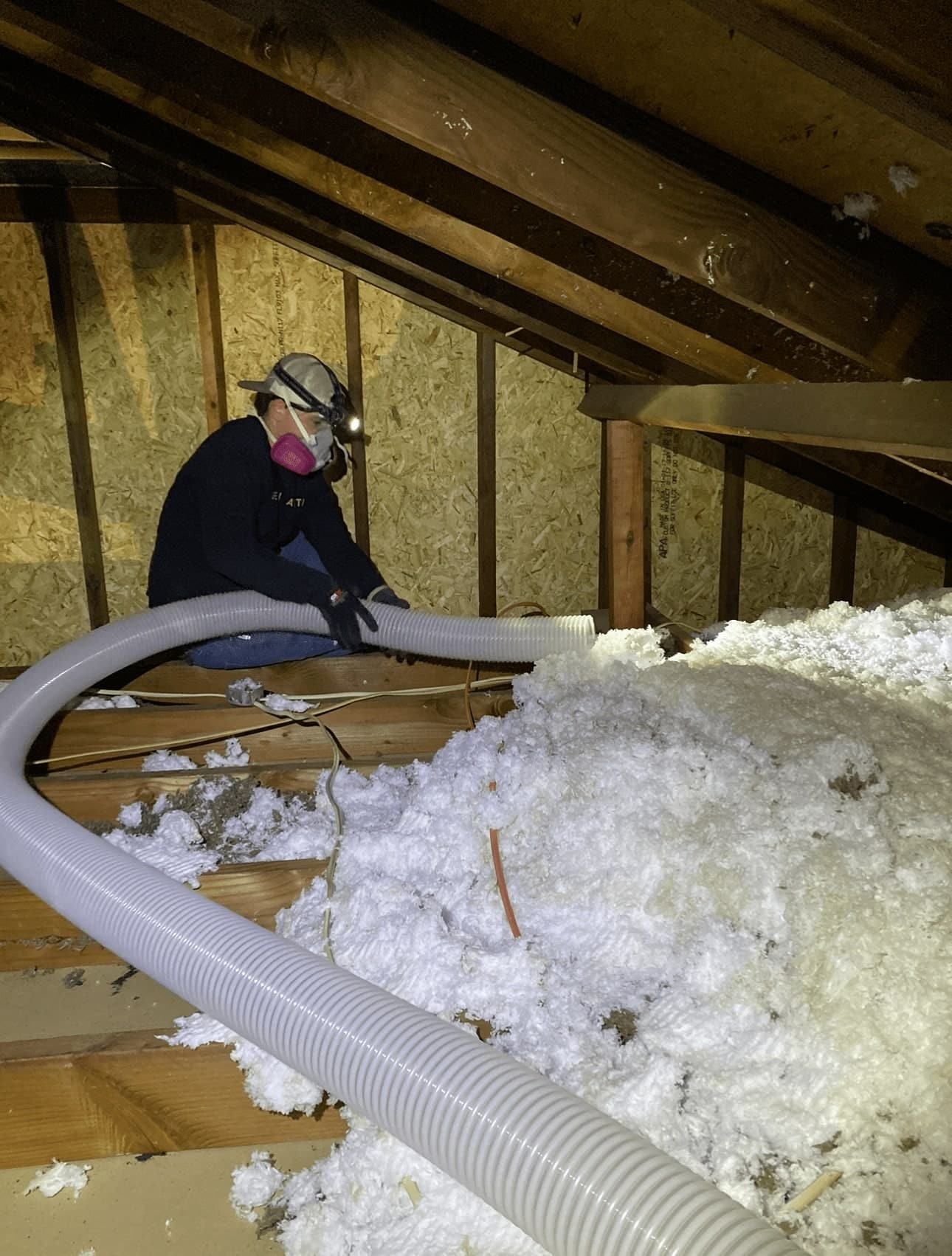Get This Report about Green Attics
Table of ContentsGreen Attics - TruthsGreen Attics Fundamentals ExplainedGreen Attics Fundamentals ExplainedHow Green Attics can Save You Time, Stress, and Money.Green Attics Fundamentals ExplainedThe Facts About Green Attics Revealed4 Easy Facts About Green Attics Shown
Building codes require that air spaces in between smokeshafts and floor or ceiling assemblies via which they pass be secured with a non-combustible fire stop (see Figure 5-3 and Figure 5-4). There is frequently a gap in between the celebration wall (such as the shared wall surface in between systems in duplexes, triplexes and row houses) and the side of the attic room floor.
A hefty polyethylene sheet which is caulked with acoustical sealant and stapled to the ceiling encloses the electrical box. An electric cable diverts from the electrical box and down via a hole into an indoor wall surface. Holes around electric cables are filled up with caulking or foam sealant, and caulking seals voids along the top of the interior walls.
After air sealing, attic room air flow is your second line of defence against the water vapour that might have located its means into the attic room. It guarantees a cooler, well-vented attic room room much less susceptible to the development of ice dams at the eaves.
The 45-Second Trick For Green Attics
You may have to locate roof or soffit vents from outdoors if they are not clearly noticeable from inside the attic. Residences with peaked roof coverings and easily accessible attic rooms are the easiest to air vent by utilizing the proportion of 1 to 300. This proportion describes unblocked vent location to the protected ceiling area.

The adhering to Components detail the best method depending on your attic room type. After you have evaluated the attic room and lugged out any kind of remedial work, focus initially on air and wetness control.
The Best Guide To Green Attics
On the other hand, spray foam supplies air securing and a first layer of high top quality insulation that can be covered as much as the preferred RSI (R) level. If the attic room retrofit is being completed in combination with indoor renovations, the simplest method is to mount a brand-new, single air and vapour barrier on the underside of the ceiling joists.
The major trouble with this method involves securing the barrier to the wall leading plate, particularly at the eaves where there is little room to manoeuvre. This location should be well sealed. Spray foam or rigid board insulation can aid bridge the void in this field. Cut rigid board to fit between the ceiling joists and to expand from the exterior wall leading plate toward the attic room. Air conditioning repair.
Get rid of existing insulation from the location you are working on and set it to one side. Caulk all sides, gaps and joints, see Numbers 5-10 and 5-13.
Spray foam specialists can mount closed-cell foam between the joists to air seal and add insulation at the exact same time to the ceiling. All existing insulation and dirt have to be gotten rid of first to allow for an excellent bond.
See This Report on Green Attics
(https://www.pageorama.com/?p=greenatt1cs)
This gets rid of roofing airing vent and develops what is called a hot roof covering, where the attic room comes to be part of the conditioned (warmed and cooled) residence area. This procedure may appropriate for some attic rooms, yet do not visit this site right here proceed without authorization from your building assessor, and then just use a certified spray foam specialist that knows with the procedure.
If there are obstructions over the joists, such as with a truss roof, it may be simplest to place batt insulation into the joist areas and after that use loose-fill insulation to create a full blanket of insulation over the joists and around all blockages. Loose-fill insulation is also good by itself, specifically in irregular or obstructed areas.

The Ultimate Guide To Green Attics
Usage frustrates in between each rafter area to avoid it from being blocked (see Figure 5-11). Insulate above and listed below cross bracing, splitting or reducing the batt to accommodate the cross supporting as illustrated in Number 5-12. Additionally, reduced one batt right into a series of wedges and after that fit a wedge under each brace.
The initial layer of batts should be thick adequate to completely fill up to the top of the joist area. The 2nd layer can after that run vertical across the joists to obstruct any kind of heat circulation via and around the joists (see Number 5-13). Home energy efficiency. Guarantee that there are no voids in between the two layers of insulation
Begin at one end of the attic room and unfold the covering. Number 5-11 Baffles can be used to maintain air flow with the soffit vents Text version Cutaway of baffles in between attic roofing joists with arrows suggesting air activity taking a trip from the outside, via an air vent in the ceiling overhang, and over the baffles.
Not known Details About Green Attics
Number 5-13 The leading layer of insulation runs perpendicular down layer Text version Illustration of layers of batts of insulation in between and over attic joists. Batts in addition to joists are perpendicular to batts in between joists. A polyethylene sheet is laid under both layers of insulation and affixed to the top of attic room joists by caulking and staples.

If the loose fill is deeper than the joists, build insulation structure (a baby crib) around the attic room hatch to make sure that it can be filled to the edge (see Figure 4-7). The bags of insulation product will certainly detail the number of square metres (or square feet) each bag must cover to supply the called for RSI worth.
Green Attics Can Be Fun For Everyone
If you are having a service provider do the job, compute the RSI worth that you want and inspect the bags of insulation to be used. They need to indicate the location that a person bag will cover at the selected insulating worth. You and the professional ought to then settle on the complete number of bags to be made use of, the anticipated insulating value and the minimum settled deepness of insulation throughout the attic, based on a particular thickness.